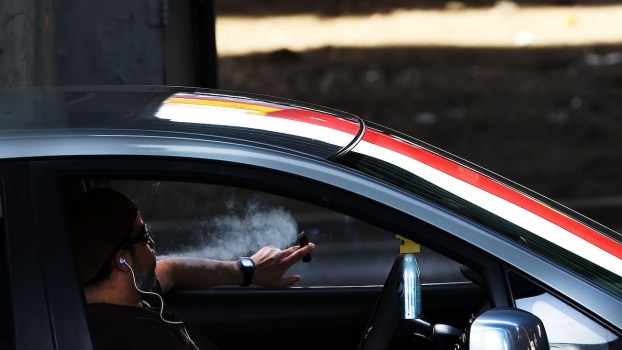
What Does Blue Smoke From a Car’s Exhaust System Mean?
There are a ton of small maintenance processes going on under the hood of your car. From your fuel pump delivering gas from the tank, to your engine to your valves working in harmony to fill and clear your vehicle’s combustion chambers, many things are going on inside your vehicle. Your exhaust system is one of the most essential parts of your car, and it is responsible for getting rid of all the exhaust and byproducts of the combustion process.
However, what happens if you start to see some smoke out your vehicle’s tailpipe? What if that smoke ends up being an odd blue color? Here is everything you need to know about your vehicle’s exhaust system and what it means if you start to see blue smoke out of your tailpipe.
What does an exhaust system do?
Before we get into what different types of smoke mean regarding vehicle emissions, let’s talk about what makes up a vehicle’s exhaust system. On a typical non-EV, an exhaust system is a system your car uses to eliminate all the byproducts of the combustion process in your engine. According to Minit-Tune, an exhaust system is made up of four main parts. The first part is your exhaust manifold; this is the system part connected to your engine. Valves in your engine open after combustion occurs, and the gasses first travel through the exhaust manifold.
After the exhaust manifold, these gases travel through a set of pipes to the catalytic converter. The catalytic converter is a part of your exhaust system that contains precious metals such as palladium, rhodium, and platinum. When the toxic exhaust gasses pass through the catalytic converter, a chemical reaction occurs between the metals and the gasses, removing 90% of all toxins in the gas. Next, the exhaust travels through the muffler, which is the sound-deadening device in the system. Finally, the exhaust travels out the tailpipes and into the air.
Is it normal to see smoke out of your tailpipe?
While it is true that combustion occurs in your engine and the tailpipe is how the exhaust leaves after combustion, there really shouldn’t be any visible gasses leaving your tailpipe. According to Firestone, the only gasses or smoke you should be seeing is light or thin white smoke. This is typically only seen upon startup, and it is water vapor condensation that settles in the exhaust while your vehicle is sitting. Alternatively, if it is a very cold day, it is not uncommon to see white, thin condensation leave your vehicle’s tailpipe as it warms up.
Other than these thin water vapor gasses, there should be no smoke coming out of your vehicle’s tailpipes.
Blue and other colored smoke emissions
If the smoke leaving your vehicle’s exhaust system is blue or gray, your vehicle is burning oil. This happens when your engine starts to wear. Oil can start leaking through the valve seals or piston rings and fall into the combustion chamber, where it gets burned along with fuel. Black exhaust smoke typically happens when your car is burning too much fuel. This can be due to a backed-up air filter or malfunctioning fuel injector. If you have an older vehicle, black soot leaving the tailpipes can signify a dirty exhaust system.
The worst smoke you can see out of your tailpipe is white smoke, which isn’t smoke at all. White smoke, or steam, typically occurs when your car has blown a head gasket. In simple terms, a blown head gasket allows water or coolant to enter the engine, interfering with the combustion chamber. Head gaskets can cost thousands to repair due to the labor required to disassemble the engine. Regardless of what color your vehicle is smoking, make sure you address the issue sooner rather than later!





